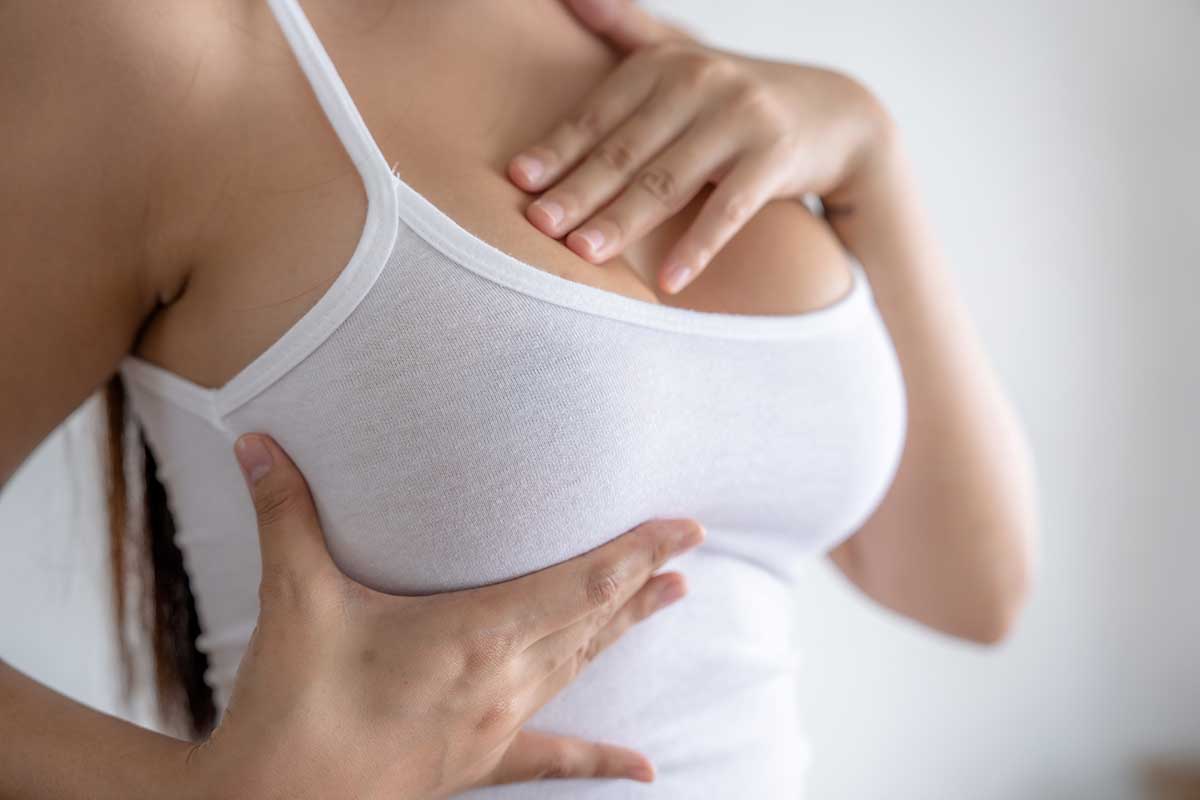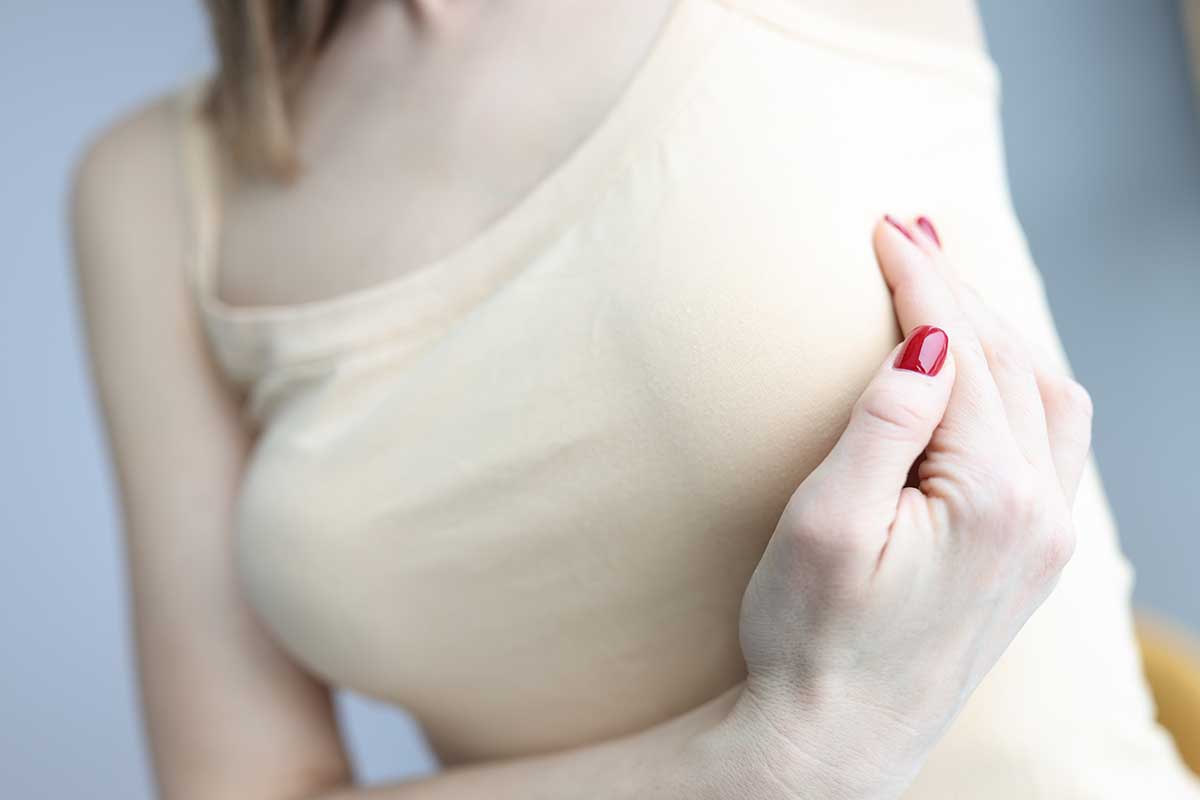Motherhood is a beautiful journey filled with joy and challenges, and for many new moms, breastfeeding is an integral part of that experience.
However, mastitis can be an unwelcome companion on this journey, causing discomfort and sometimes pain.
Mastitis is the inflammation of breast tissue, often accompanied by infection.
It primarily affects breastfeeding women. Mastitis usually arises from blocked milk ducts, leading to the buildup of milk within the breast, which can become a breeding ground for bacteria.
Causes of Mastitis

Blocked Milk Ducts
One significant cause of mastitis is the blockage of milk ducts, which occurs when milk is not efficiently drained from the breast, resulting in milk stasis.
When this happens, the accumulation of milk can lead to inflammation and, in some cases, infection.
Bacterial Infection
Mastitis often involves a bacterial component, with Staphylococcus aureus being a prevalent offender.
This bacterium, commonly found on the skin, can enter the breast through cracks or openings, causing infection and contributing to the development of mastitis.
Understanding the role of bacterial infections is crucial for effectively managing and preventing this condition.
Infrequent Breastfeeding or Improper Latching
The frequency of breastfeeding and the quality of latching are vital factors in preventing mastitis.
Irregular breastfeeding patterns or improper latching techniques can result in inadequate milk drainage, creating an environment conducive to the development of mastitis.
Mothers should be aware of the importance of establishing proper breastfeeding habits to reduce the risk of this condition.
Weakened Immune System
A compromised immune system can significantly increase the susceptibility of mothers to infections, heightening the likelihood of developing mastitis.
Understanding the interplay between the immune system and mastitis is essential for identifying risk factors and implementing preventative measures.
Mothers with weakened immune systems should take extra precautions and seek guidance from healthcare professionals to minimize the risk of mastitis.
Symptoms of Mastitis
Breast Pain and Tenderness
A hallmark symptom of mastitis is the presence of localized pain and tenderness in the affected breast.
Discomfort is often more pronounced during breastfeeding or when pressure is applied to the affected area.
Understanding the nature and intensity of this pain is crucial for early identification and effective management of mastitis.
Redness and Swelling
The affected breast typically exhibits noticeable changes, including redness, swelling, and increased warmth to the touch.
These visible signs of inflammation indicate the body’s response to infection.
Monitoring these visual cues is essential for mothers to recognize mastitis and promptly seek appropriate medical attention.
Flu-like Symptoms
Mastitis often presents with flu-like symptoms, adding extra discomfort for affected mothers.
Fever, chills, and fatigue are common systemic manifestations of the infection.
Recognizing these broader symptoms is vital in distinguishing mastitis from other less severe conditions and ensuring timely intervention for optimal recovery.
Lump or Hard Area
A palpable lump or hardened area within the breast is a notable symptom of mastitis, pointing to a potentially blocked milk duct.
This lump can be felt during self-examination or identified by healthcare professionals during clinical assessments.
Understanding the significance of these physical changes aids in differentiating mastitis from other breast conditions and guides appropriate therapeutic measures.
How do you treat mastitis?

1) Continue Breastfeeding
Contrary to common misconceptions, maintaining regular breastfeeding is a fundamental aspect of treating early mastitis.
Continued breastfeeding helps to effectively empty the breast, preventing the further accumulation of milk and reducing the risk of infection.
This approach also supports the mother’s overall well-being and aids in a faster recovery.
2) Ensure Proper Latching
Addressing the root cause of mastitis involves ensuring proper latching during breastfeeding.
Incorrect latching can contribute to milk stasis and increase the likelihood of recurring episodes.
Seeking assistance from a lactation consultant or healthcare provider is advisable to receive personalized guidance on improving latching techniques and preventing future occurrences.
3) Frequent Breastfeeding or Pumping
Increasing the frequency of breastfeeding or pumping is a proactive measure to promote optimal milk drainage.
This step is particularly essential in early mastitis cases, as it helps alleviate breast congestion and facilitates the removal of any blocked milk ducts.
Consistent drainage supports the resolution of symptoms and prevents the condition from progressing.
4) Apply Warm Compresses
Applying warm compresses to the affected breast before breastfeeding or pumping relieves pain and encourages milk flow.
The warmth helps to soothe the breast tissue, making it more pliable and facilitating easier milk expulsion.
Integrating warm compresses into the treatment routine can enhance the overall effectiveness of mastitis management.
5) Pain Relief Medications
For managing the discomfort associated with mastitis, non-prescription pain relievers such as ibuprofen can be considered.
These medications help manage pain and reduce inflammation, providing a more comfortable breastfeeding experience.
It is advisable to consult with a healthcare professional before initiating any medication, especially if there are concerns about potential interactions or adverse effects.
6) Rest and Hydration
Ensuring adequate rest and proper hydration are integral to the recovery process.
Rest allows the body to focus energy on healing, while hydration supports overall well-being.
These lifestyle factors are crucial in promoting a speedy recovery from early mastitis and reducing the risk of complications.
How quickly does mastitis get better?
Typically, symptoms stick around for 2-5 days and are at their worst on the second and third days.
If mastitis isn’t caused by an infection (non-infective), it could turn into infective mastitis, which is based on infection or bacteria.
If you have bacterial mastitis, your healthcare provider will give you an antibiotic to treat the infection in your milk ducts. Antibiotics work to eliminate the bacterial infection.
Typically, the infection should be gone within ten days. You should start feeling better within 48 to 72 hours of starting the antibiotic treatment.
Health Disclaimer:
This article is for informational purposes and is not a substitute for professional medical advice, diagnosis, or treatment.
Always seek the advice of your physician or other qualified health provider with any questions you may have regarding a medical condition.
If you suspect mastitis or experience persistent symptoms, consult a healthcare professional for a proper diagnosis and guidance on the most appropriate course of action.





